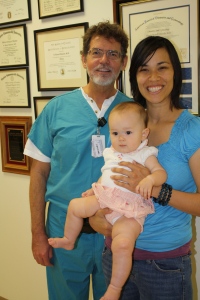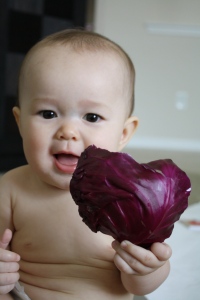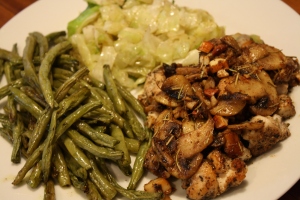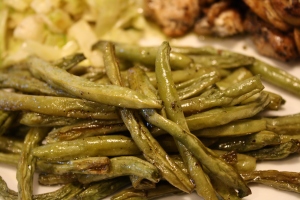
From Dr. Cordain's site
My favorite part of this whole battle is Dr. Loren Cordain’s rebuttal. He cites 5 studies regarding the Paleo diet and then broke apart the inaccuracies within the U.S. News report. Enjoy here.
I like the science and new research coming out on the Paleo lifestyle, but do not purport to be a scientist of any type. However, having an opinion seems to be right up my alley, and I’ve taken the liberty to share with you what I think about these studies. So without further adieu, allow me to present Most Convincing, Most Fascinating, and Most Thought-Provoking:
Most Convincing. Paleo Diet vs. Generally-Prescribed Diabetes Diet
The details. 2009. 13 diabetics. Two diets-Paleo and one generally prescribed for people with diabetes. All patients eat one diet for 3 months, then switch to the other for 3 months. Paleo better in: weight loss, waist size, blood pressure, HDL cholesterol, trigylcerides, blood glucose, hemoglobin A1c.
The commentary. As Dr. Cordain says, “The strength of this experiment was its cross over design in which all 13 diabetes patients first ate one diet for three months and then crossed over and ate the other diet for three months….represents the most powerful example to date of the Paleo diet’s effectiveness in treating people with serious health problems.”
All of the patients did both diets, with Paleo winning out for all 13 patients. These are the kind of results that skeptics may refute forever, nitpicking at research design or meal plans. But the lives of those 13 patients are changed forever. Even if they don’t continue with a Paleo diet, they know it works and can choose to take greater charge of their health and follow the Paleo lifestyle.
The source. Jönsson T, Granfeldt Y, Ahrén B, Branell UC, Pålsson G, Hansson A, Söderström M, Lindeberg S. Beneficial effects of a Paleolithic diet on cardiovascular risk factors in type 2 diabetes: a randomized cross-over pilot study. Cardiovasc Diabetol. 2009;8:35
Most Fascinating. The Aborigine Study
The details. 1984. 10 Aboriginal Australians grew up in outback until eventually forced to move into rural community with access to Western foods. All became overweight and diabetic. Returned to outback for 7 weeks. Avg weight loss = 16.7 pounds. Cholesterol down 12%. Triglycerides down 72%. Insulin and glucose metabolism = normal = no more diabetes.
The commentary. Honestly, I don’t really care about the anthropological reasons we eat Paleo. Sure, it’s nice to know, but my reason for eating Paleo is for optimal health and not to emulate cavemen. Of course, the fact that they align well makes for a nice marketing tool.
What I find supremely fascinating is that this study was done in the first place. Ten Aboriginal Australians returning to the Outback for seven weeks in 1984, presumably voluntarily, when diet trends were most un-Paleolithic in their low-fat, vegetable oil-pushing, pasta-promoting ways. Is it even possible to conduct this type of study today? Would we be able to find a population that is suffering as a whole from a modern diet, but were also raised to be hunter-gatherers? I wish we had more studies like this one, more for my nerdy reading pleasure than anything else. Or maybe I could at least convince Tom Naughton to make a movie about it.
The source. O’Dea K: Marked improvement in carbohydrate and lipid metabolism in diabetic Australian aborigines after temporary reversion to traditional lifestyle. Diabetes 1984, 33(6):596-603.
Most Thought-Provoking. Paleo vs. Mediterranean
The details. 2007. Twenty-nine diabetics placed on 12-week regimen of either Paleo or Mediterranean (whole grains, margarines, oils, fruits/veggies, low-fat dairy). Decreased risk for heart disease in both. Bigger decrease for Paleo. Follow-up study shows Paleo is more satisfying, calorie-for-calorie.
The commentary. This is actually a topic for a future post, so I’ll be brief. Basically, the Mediterranean diet worked in some ways. A good reminder that even if I personally believe Paleo is the way to optimal health, it doesn’t cancel out that other diets still result in improved health, even if not wholly improved.
The source. Lindeberg S, Jonsson T, Granfeldt Y, Borgstrand E, Soffman J, Sjostrom K, Ahren B: A Palaeolithic diet improves glucose tolerance more than a Mediterranean-like diet in individuals with ischaemic heart disease. Diabetologia 2007, 50(9):1795-1807.
—–
This ends my Paleo v. World series (catch Part 1 and Part 2 if you didn’t get a chance).
Is this whole Paleo battle just silly or is it necessary? Did anyone else read the report or rebuttals? What did you find interesting, annoying, validating, infuriating, etc.?
Tags: Paleo, PCOS, PCOS Cure, PCOS Diet, PCOS Nutrition, PCOS Symptoms, PCOS Treatment, PCOS Weight Loss, Polycystic Ovarian Syndrome, Weight Loss, Women's Health























